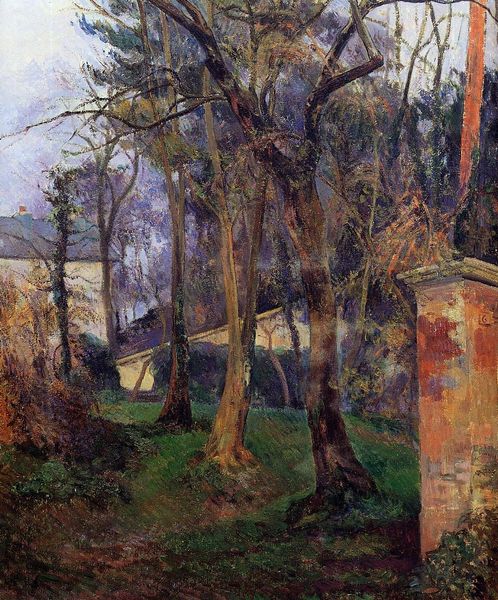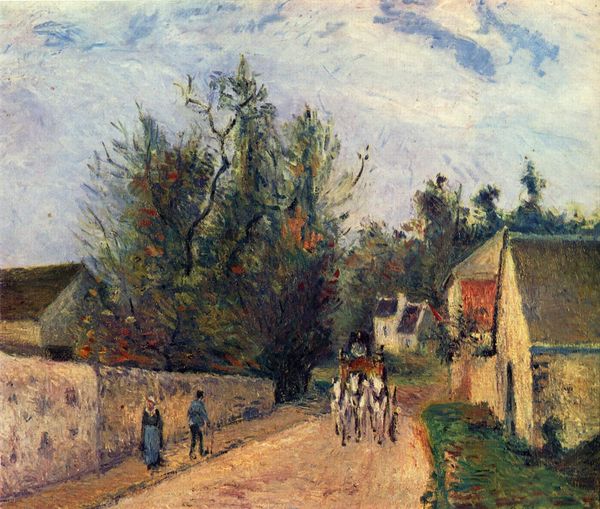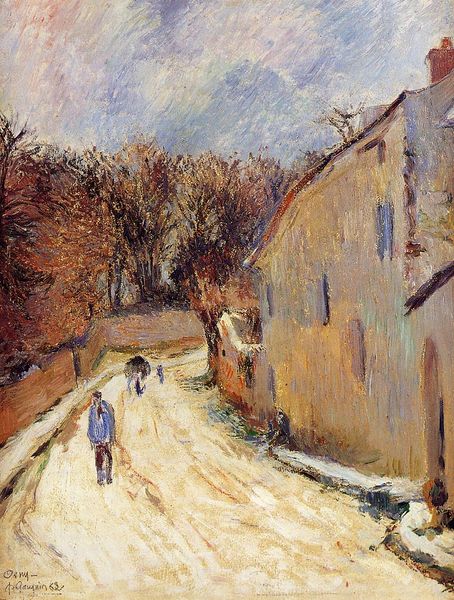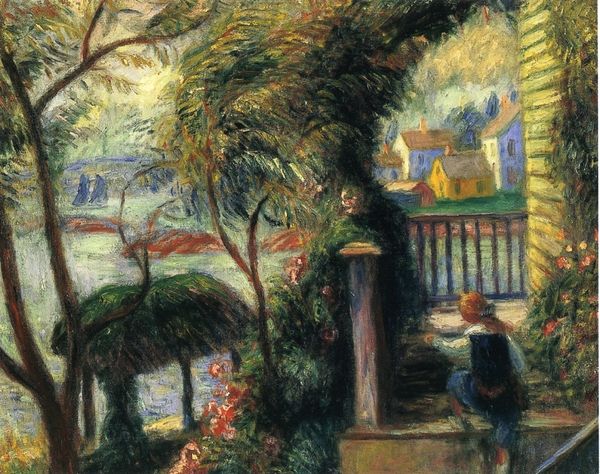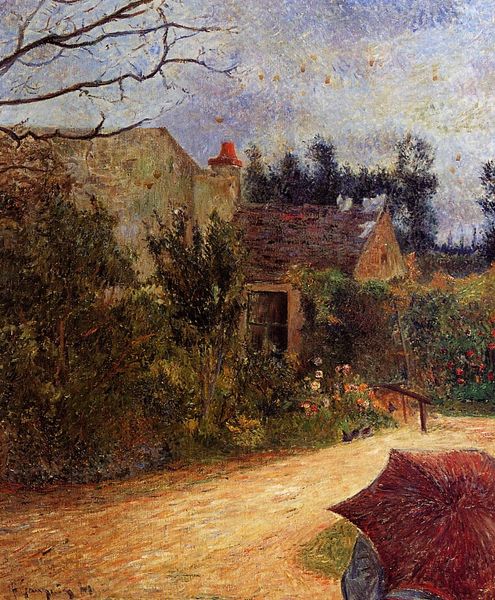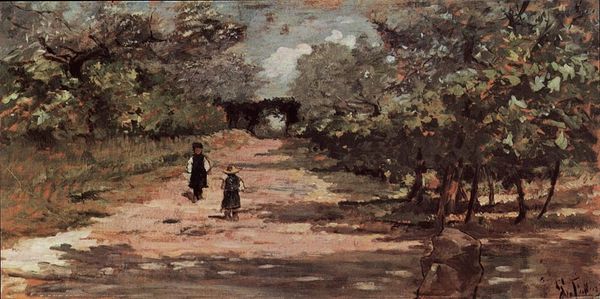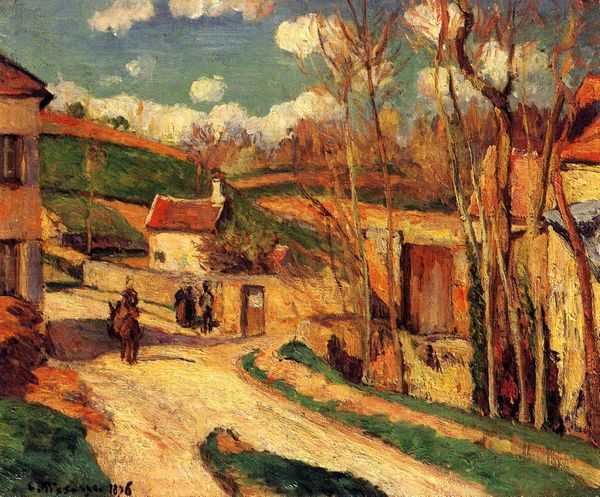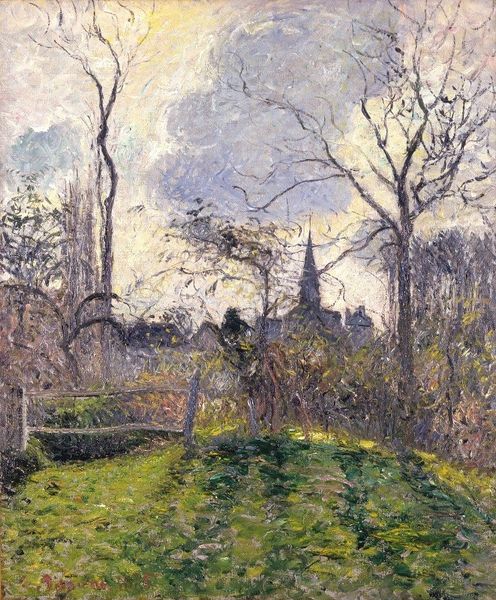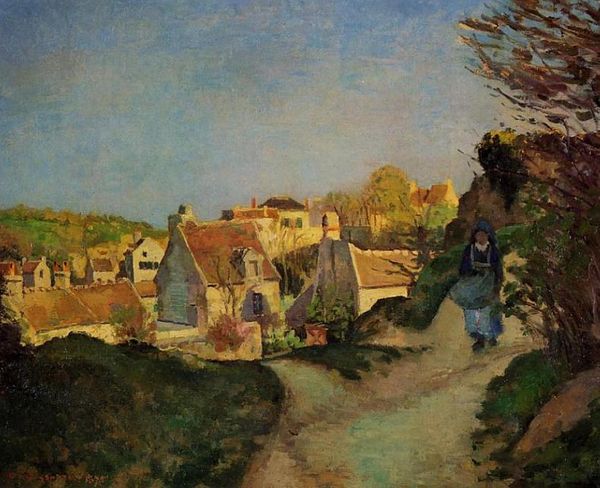
painting, oil-paint
#
portrait
#
tree
#
painting
#
impressionism
#
oil-paint
#
landscape
#
impressionist landscape
#
oil painting
#
line
#
cityscape
#
realism
Copyright: Public domain
Editor: Here we have Paul Gauguin’s "The Artist’s Children," painted in 1884. The texture of the oil paint is really striking. What's your perspective on this piece? Curator: I see a lot of emphasis on the materiality of everyday life. Notice the rough brushstrokes depicting the architecture, how it captures the industrial materials that frame domestic life. How do these materials and processes – oil paint applied in a particular way – inform the subjects’ reality? Editor: I guess it makes the scene feel more grounded and less idealized than a classical painting. Curator: Exactly. It isn't just about "representing" children; it is about Gauguin’s engagement with the physical world and the realities of making a home and a family in a rapidly changing society. He presents what building a life looked like with the materials he had. Consider the stroller—a new mass-produced consumer item then. How does it reshape motherhood and the domestic sphere? Editor: It is easy to miss that without focusing on those tangible objects. Did his impressionistic technique contribute to this? Curator: Absolutely. The visible brushstrokes remind us of the artist's labor. It's not about hiding the making; it's about foregrounding the production, similar to craft production in domestic settings. Editor: I had never thought about Impressionism that way, connecting it with labor and consumption. Thanks for making me consider all of these material connections. Curator: My pleasure. Looking closely at materials transforms how we interpret artworks.
Comments
No comments
Be the first to comment and join the conversation on the ultimate creative platform.

